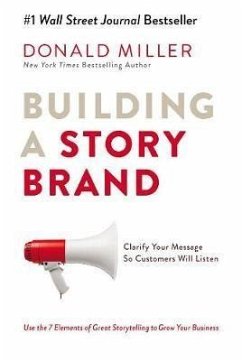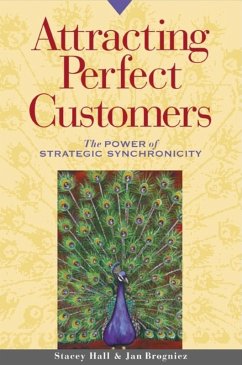
Strategy and Management of Industrial Brands
Business to Business Products and Services
Versandkostenfrei!
Versandfertig in 1-2 Wochen
39,99 €
inkl. MwSt.
Weitere Ausgaben:

PAYBACK Punkte
20 °P sammeln!
Strategy and Management of Industrial Brands is the first book devoted to business-to-business products and services.Looking at numerous companies, this book defines two brand objectives that are specific to the industrial and service sectors and which must be added to the traditional functions of branding: the minimization of risk as perceived by buyers, and the facilitation of the customer company's performance by the supplier brand.Different ways of classifying brands are suggested, providing a better understanding of brand strategies adopted by business-to-business companies, as well as ne...
Strategy and Management of Industrial Brands is the first book devoted to business-to-business products and services.
Looking at numerous companies, this book defines two brand objectives that are specific to the industrial and service sectors and which must be added to the traditional functions of branding: the minimization of risk as perceived by buyers, and the facilitation of the customer company's performance by the supplier brand.
Different ways of classifying brands are suggested, providing a better understanding of brand strategies adopted by business-to-business companies, as well as new concepts such as brand `printability', `visibility', and `purchaseability'.
Five major brand categories are dealt with in separate chapters:
-entering goods brands;
-intermediary equipment goods brands;
-equipment goods brands;
-business-to-business service brands; and
-industrial distributor brands.
From a practical point of view, the aim of the book is to address the main concerns of managers: How to create and protect brands? What type of visual identity is appropriate? How to manage international brands?
An analysis of 1,500 industrial brands as well as 40 case studies are included in this book. These brands are used in both the industrial (automotive, building, aeronautics, IT, etc.) and consumer sectors (clothing, electronics, food packaging, telecommunications, etc.).
This book has been written for professors and students of universities and business schools, as well as managers and people working in industry or the service sector.
Looking at numerous companies, this book defines two brand objectives that are specific to the industrial and service sectors and which must be added to the traditional functions of branding: the minimization of risk as perceived by buyers, and the facilitation of the customer company's performance by the supplier brand.
Different ways of classifying brands are suggested, providing a better understanding of brand strategies adopted by business-to-business companies, as well as new concepts such as brand `printability', `visibility', and `purchaseability'.
Five major brand categories are dealt with in separate chapters:
-entering goods brands;
-intermediary equipment goods brands;
-equipment goods brands;
-business-to-business service brands; and
-industrial distributor brands.
From a practical point of view, the aim of the book is to address the main concerns of managers: How to create and protect brands? What type of visual identity is appropriate? How to manage international brands?
An analysis of 1,500 industrial brands as well as 40 case studies are included in this book. These brands are used in both the industrial (automotive, building, aeronautics, IT, etc.) and consumer sectors (clothing, electronics, food packaging, telecommunications, etc.).
This book has been written for professors and students of universities and business schools, as well as managers and people working in industry or the service sector.














